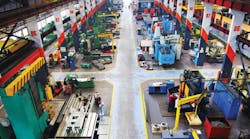Did you hear the news about ISO 55000, as well as its companions, ISO 55001 and ISO 55002? They are a series of international standards for an asset management system, and they were published in January 2014 following several years in development.
Oh, you did hear the news. You skimmed the information, concluded it was meant for your reliability and maintenance crew only, and dismissed it from mind knowing that your capable organization would run with it, presuming it held merit.
Such thinking could be a mistake. In fact, it would be counter to the purpose of ISO 55000, which takes a holistic approach to asset management. In other words, it's not just about maintenance.
"The standard is all about value creation," says Scott Morris, associate director of global engineering for Genzyme, a Sanofi company. Morris also served as vice chair of the U.S. delegation for the development of ISO 55000.
"It's about using assets to achieve organizational objectives," he says.
The fact is many manufacturers have hundreds of thousands, even millions, of dollars invested in assets (which can include brand reputation).
Significant value in corporate assets remains leashed because departments pursue their responsibility toward asset management in a bubble, Morris says. As one example, purchasing's strict focus on cost may constrain asset design or reliability -- and ultimately drag down optimal overall performance.
On the other hand, a well-executed holistic approach can help manufacturers avoid recapitalization costs or lower operating costs by improving asset utilization and capacity, he notes. Moreover, the potential to curb safety incidents both small and significant shouldn't be overlooked.
And, while ISO 55000 is not solely about maintenance, it is absolutely about leadership. As Life Cycle Engineering's Bill Wilder notes in his Learning is Change blog on the topic of the new standard: "ISO 55000 requires changes in policy, processes and people. This is a large-scale change that can only be achieved through active and visible sponsorship by senior leaders."
| For more maintenance news, visit iw.com/operations/maintenance |
It's too soon to know whether ISO 55000 will gain the visibility of the ISO 9000 family of quality management standards. But it's not too soon to consider whether the ISO 55000 series has merit.




